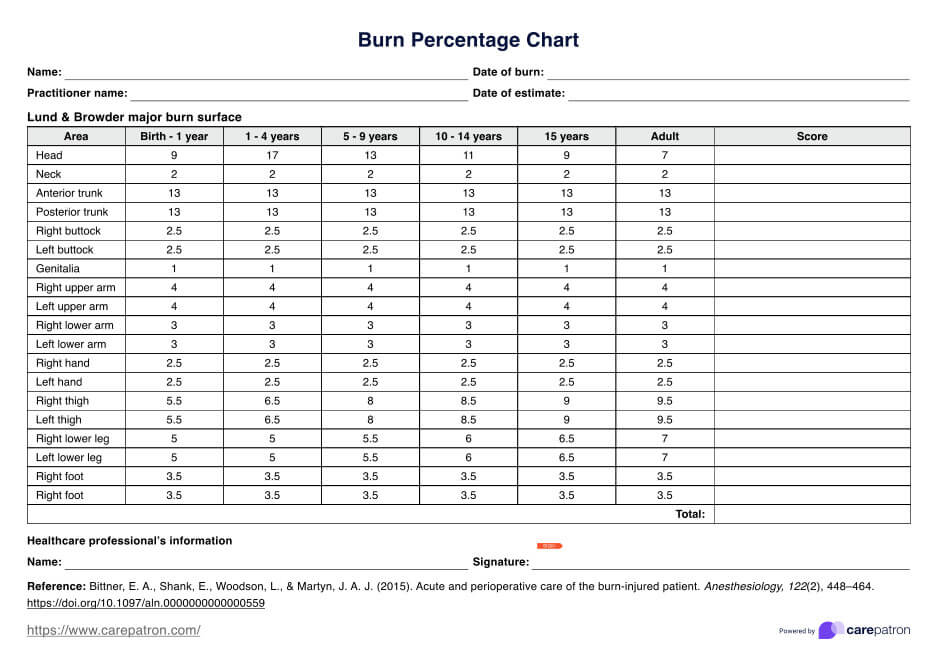To calculate burn percentage, healthcare professionals typically use methods like the Rule of Nines, which divides the body into sections representing 9% or multiples of 9% of total body surface area (TBSA), allowing for a quick estimation of the affected area based on the location of the burns

Burn Percentage Chart
Our Burn Percentage Chart can help you estimate the total body surface area affected by burns, guiding management and treatment of burn injuries.
Burn Percentage Chart Template
Commonly asked questions
The Rule of Nines is a tool used to estimate the percentage of TBSA affected by burns, dividing the body into sections where the head is 9%, each arm is 9%, each leg is 18%, the anterior trunk is 18%, the posterior trunk is 18%, and the genitalia is 1%
The 1% rule for burns refers to using the patient's palm (excluding fingers) to estimate burn size, where the palm represents approximately 1% of the TBSA; this method is particularly useful for assessing small burns quickly.
EHR and practice management software
Get started for free
*No credit card required
Free
$0/usd
Unlimited clients
Telehealth
1GB of storage
Client portal text
Automated billing and online payments











